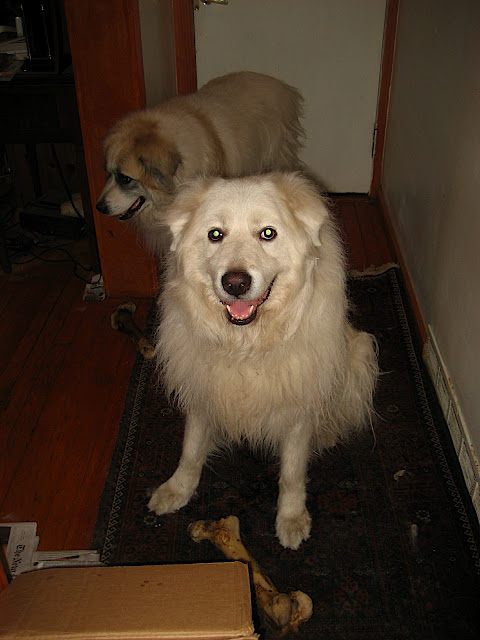 |
| Handily, a glass milk bottle has the same diameter top as a glass carboy. I stuck a spare cork and airlock on the wort I'd used to test the initial gravity and pitched a tablespoon of bread yeast in there. After a day of furious bubbling I got a theoretical final gravity of over 8%. The final gravity of my actual brew is about 7.5% ABV. Not too shabby. (Thanks to Evan for the idea of testing for the theoretical final gravity.) |
If you browse the sour section of the brewing threads you'll find quite a few brewers
agreeing that women tend to like sour beers. My wife is among those sour-loving women. I don't know why, but it's a happy truth. Sour beers are definitely an
acquired taste, but I find myself more and more interested in tasting new sours and leaving the standard beer categories behind. Sour beers, even those brewed with no fruit, tend to have fruity qualities and a broad range of flavors on the palate. Tasting sours is fun because you can pick out quite surprising flavors, just like people do with wines—sour cherry, sherry vinegar, damp basement, sour patch kids, banana peel, pixie sticks, brussels sprouts...I got all of those from one pour of Monk's Cafe.
So for a few years now I've been wanting to brew a sour for Olivia, but I shied away for the following reasons:
- Sour yeast strains are notoriously difficult to kill and can sometimes render pieces of your equipment serviceable only for sours.
- Despite being difficult to kill, sour yeast strains are also difficult to use well because they tend to require a higher sustained temperature to ferment fully, meaning you can't just tuck the carboy away in the basement for a few days and come back when it's done.
- Sour beers are not ready to drink as soon as fermentation is complete. All beers need to age at least a few weeks before they taste really good (in my experience they start to taste decent about a month out and stop improving much after two to three months' time). Sours can take anywhere from 6 months to 3 years to achieve the proper sourness.
After some further research I've learned that the first two reasons were not that great. Most people have no issues steriling equipment that's been used for sours and brewing other styles with them, so it's a small risk. And what's the worst that can happen? Buying some more rubber hose? Deal with the disappointment of one spoiled batch and a lesson learned? It's a poor reason not to start brewing sours.
The second reason is also not that big of a deal. We're only talking about 4-14 days of primary fermentation where the temperature needs to be higher. Here are some great ways to make it work:
- Brew in the summer. Surprise! It's a lot hotter everywhere in my house in the summer. Not quite the 80 degrees that the Roselaire strain is proported to need, but damn close at times. Just find the hottest room in the house and see how it goes.
- Use a heating pad. This can be tricky because they tend to have an auto shut-off feature and they're a bit of a fire hazard to leave unattended. But it can be done.
- Try it at room temperature and pitch more yeast if you need to. Sometimes you just need to throw more yeast at the problem and it can finish off the rest of the unfermented sugars. (Part of my solution to the problem.)
- Leave the primary fermenter near the stove. The extra heat generated by the pilot light on a gas stove might be enough to keep the yeast comfortable and feeding merrily away. (The other part of my solution.)
This is a long-winded way of saying: I should have done this sooner. If I'd started brewing sours when I first had the incling they would have been done by now! I bought the ingredients to make a Rodenbach clone, which is one of my favorite examples of the Flanders red style. I needn't have worried about the yeast so much, because just letting it ferment next to the stove helped the yeast ferment fully. I also used two yeast activator packs at the start, just to increase my odds of success.
And I can say without question that it's the best-tasting beer to come out of primary fermentation to date. Check back with me in 18 months and I'll tell you how it came out in the end.
 |
| Now we wait. |




















